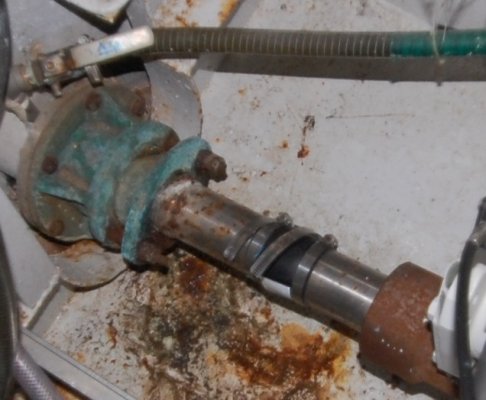stubones99
Guru
Has anyone ever seen a vessel that uses a short length of rubber hose (like radiator hose) from the transmission shaft to the prop shaft?
This is a big red flag for me which makes me wonder what other corners were cut in the building of this boat...
I know the boat needs cleaning up and basically a refit but not having a reasonable shaft coupling, and the image seems to show the engine is out of alignment with the prop shaft. I suspect that WOT will really heat up the hose due to the pressure and flexing under 200hp output.
Any other opinions?
Thanks!
Stu
This is a big red flag for me which makes me wonder what other corners were cut in the building of this boat...
I know the boat needs cleaning up and basically a refit but not having a reasonable shaft coupling, and the image seems to show the engine is out of alignment with the prop shaft. I suspect that WOT will really heat up the hose due to the pressure and flexing under 200hp output.
Any other opinions?
Thanks!
Stu

